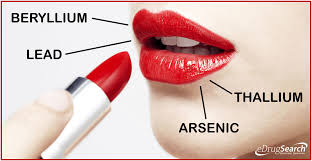Heavy metals are so ubiquitous in our environment that everyone is exposed to them. They cannot be avoided completely and are found in virtually everyone to some degree. Sources of heavy metals range from environmental, occupational, household (including foods, water, paints, cosmetics, etc), medical and hobbies. Heavy metals can enter the body through inhalation, intestinal absorption as well as be absorbed through the skin depending upon their chemical form. Once absorbed into the body, heavy metals have a wide distribution in various organs, glands, bones and the central nervous system – for this reason heavy metals and other toxins are often not detected in either blood or urine testing.
Hair tissue mineral analysis (HTMA) measures nutritional minerals and heavy metals, and reflects the accumulation of these metals within the tissues of the body. This provides a record of long-term intake, retention, or excretion of various metals.
Can HTMA reveal recent exposure to a toxic element?
The answer to this question is ‘no’. If a heavy metal such as arsenic was ingested, then the hair by virtue of its normal development and growth could not reveal the exposure until after it has been incorporated into the hair shaft. Therefore, it would take a minimum of thirty days for this to begin to occur.
How does the laboratory treat an elevated result?
When a heavy metal is found above a certain level in a specimen being analyzed, the test results for that specimen are flagged and the entire specimen is automatically placed on hold for verification. The verification or recheck process involves the retesting of the specimen on a completely independent analytical run, which involves preparing another testing sample from the same original submittal specimen. To retest, a second specimen is reweighed, redigested and given a follow-up analytical test. Verification requires the test value obtained by this second analysis to confirm the initial high test result for the heavy metal. When all controls and calibrations are within acceptable limits for both the initial analysis and the follow-up recheck, the original test results are released for report processing and delivery to the attending practitioner. In the event that the verification or recheck process does not confirm the initial elevated level, then the lab notifies the administrative department to request a new sample from the practitioner. After the elevated level has been verified and the report has been sent to the practitioner, the next logical step is to rule out the possibility of an external source that may have inadvertently contaminated the sample before it was received in the laboratory.
Possible modes of contamination
 Some individuals may use a hair darkening agent on their scalp hair that contains lead acetate. Obviously this would cause a false elevation of lead on the scalp sample. Another example might be a person that works in an environment where metal dusts are present and the sample was taken after the individual came to the practitioners’ office directly from that environment.
Some individuals may use a hair darkening agent on their scalp hair that contains lead acetate. Obviously this would cause a false elevation of lead on the scalp sample. Another example might be a person that works in an environment where metal dusts are present and the sample was taken after the individual came to the practitioners’ office directly from that environment.
 It is well known that heavy metals contained in cosmetics, hair dyes etc., when applied to the skin, can be absorbed. There have been numerous cases of mercury toxicity from skin lightening creams applied for the removal of age spots. Cosmetics and dyes containing lead acetate are also known to be absorbed into the body and can be a source of chronic accumulation. A false positive would indicate undue exposure to the element and care can be taken to avoid future contact.
It is well known that heavy metals contained in cosmetics, hair dyes etc., when applied to the skin, can be absorbed. There have been numerous cases of mercury toxicity from skin lightening creams applied for the removal of age spots. Cosmetics and dyes containing lead acetate are also known to be absorbed into the body and can be a source of chronic accumulation. A false positive would indicate undue exposure to the element and care can be taken to avoid future contact.
 Another source of dyes and toxins is tattoo ink. Despite increasing evidence regarding the carcinogenic properties and cutaneous complications of tattoo inks, there are limited regulations governing the permanent makeup and tattoo industries within Australia. It’s important to understand that labelling laws did not apply to tattoo ink as the inks are intended for use by professional tattooists and are therefore regarded as workplace chemicals.
Another source of dyes and toxins is tattoo ink. Despite increasing evidence regarding the carcinogenic properties and cutaneous complications of tattoo inks, there are limited regulations governing the permanent makeup and tattoo industries within Australia. It’s important to understand that labelling laws did not apply to tattoo ink as the inks are intended for use by professional tattooists and are therefore regarded as workplace chemicals.
Head -v- pubic hair sample
Pubic hair grows slower than head hair and is less exposed to chemical treatments. A low level in a pubic sample retest may reveal that the high level from the original scalp sample was due to the possibility of external contamination. However, if the pubic sample test is also elevated, then it would definitely lead to the suspicion that an excess body burden does exist.
Heavy metals can hide
Lead and cadmium for instance are bone seekers and are eventually sequestered into the bone. As bone turnover occurs, lead and cadmium will constantly be released back into circulation and continually be incorporated into the hair shaft, therefore, revealing the chronic nature of exposure. Therapy aimed at rebalancing the mineral pattern, removal of lead and cadmium will include supplementation of quality calcium and bone-remineralising nutrients.
Hidden toxicity is also used with nutritional minerals that can sometimes be toxic in excess, such as copper. Wilson’s disease is a condition where there is little incorporation of copper into the hair shafts but excessive body burden or toxicity is in fact present and therapy is warranted. Other conditions associated with imbalanced copper levels include pyrroluria, anxiety and panic attacks.
Detoxifying heavy metals
Once any excess has been identified, there are numerous approaches available to the qualified practitioner –
- Antagonism of heavy metals via the appropriate protective nutrients
- Use of appropriate antioxidants
- Dietary modification
- Ensuring adequate sulfur-containing amino acids are in the diet
- Ensuring proper protein metabolism
- Digestive repair
- Chelating agents
- Supporting the body’s natural detoxification pathways
- Eliminating or minimising exposure
It should be noted that lecithin and other phospholipids prevent detoxification and should be avoided during this phase of treatment.
A follow-up hair analysis will provide valuable data on changes in toxicity levels.
It is essential that any form of detoxification should only be undertaken under the guidance of a qualified practitioner.

